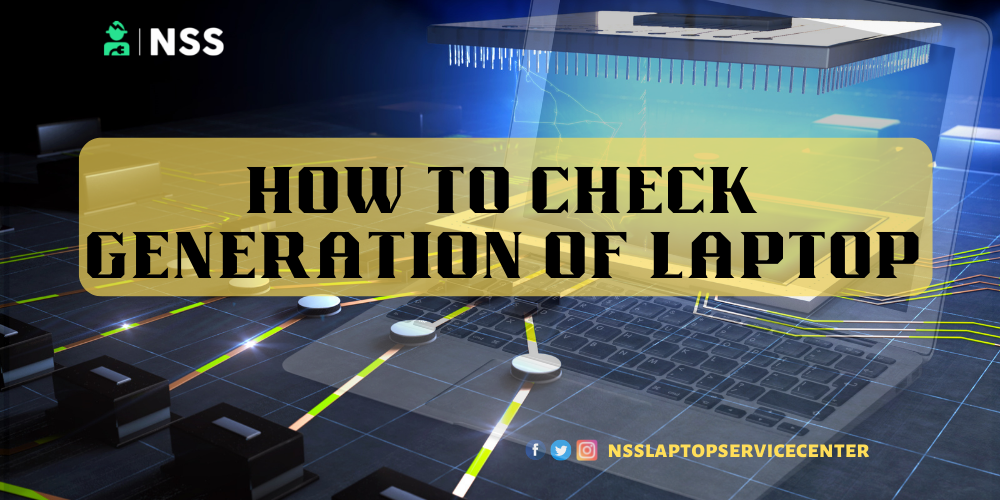
The term "generation" refers to the CPU's age. The frequency, power consumption, lithography, amount of cache, number of cores and threads, supported instructions, used slots, supported RAM, PCI-fast channel number, integrated graphics, and voltage control can vary between generations—the development of the device, etc. The performance is unique but not what anyone was anticipating.
Every generation uses energy more effectively, produces less heat, etc. Thus, the seventh-generation laptop will be significantly thinner than the fourth-generation one.
Two Windows 10 methods for determining your computer or laptop's generation
Here, I'll demonstrate two distinct techniques you can use to determine the laptop or PC's generation.
1. How to Determine Your Laptop or PC's Generation Using Its Properties
Check Generation Through Properties
The steps listed below can be used to check the Intel processor generation on a laptop or desktop running Windows 7 or higher:
Simply right-clicking on My Computer and choosing Properties will summarize the hardware and operating system as they are now set up, allowing you to inspect or locate it. The processor you use is mentioned in this literature, but its sales or marketing name refers to it.
My Computer or This PC can be selected by right-clicking, then Properties.
Now that you can see your processor, the generation of your laptop or PC is indicated by the first number following the i3, i5, or i7. For instance, the i5, a 7th-generation chipset, is what I currently have. in the section titled "System." The number shows the generation of my laptop or PC after the i5 in the screenshot below, which is 7.
using PC Properties to check the generation
The range for this number is 1 to 9. Your generation can range from 1 to 9, according to this.
2. How to Use the Task Manager to Determine a Laptop or PC's Generation
Use the Task Manager to Determine a Laptop or PC's Generation
You can find specific CPU details like the generation in Windows 10's CPU information. To access it, right-click on your taskbar and choose "Task Manager"; alternatively, you can open it by pressing Ctrl+Shift+Esc. Select "CPU" under the "Performance" tab. Here, your computer's CPU's name and speed will be displayed.
Here's how to use Windows 10's Task Manager to determine your laptop's generation:
Right-click your taskbar and choose Task Manager to get started.
Then click CPU under the Performance tab. The specifications for the Intel Processor and Generation are available here. For instance, the generation of my laptop or PC is shown by the 7th number after the i5 in the screenshot below.
Also Read: How To Transfer Photos From Phone To Laptop
Also Read: How To Download Movies In Hotstar On A Laptop
Conclusion:
These are 2 ways to find or check the generation of your PC or laptop using the PC Properties and Task Manager. You can get detailed information about your PC and laptop. Knowing about Intel's processors and generations would be helpful, especially if you want to buy a PC or laptop or add general information about your computer.
If you're experiencing any issues with your laptop, it's essential to get it serviced by a professional. Getting your computer serviced regularly can help extend its lifespan and ensure that it continues to perform at its best; check the list mentioned below:
- HP Service Centers Near Me
- MacBook Service Centers Near Me
- Dell Service Centers Near Me
- Microsoft Service Centers Near Me
- Asus Service Centers Near Me
- Acer Service Centers Near Me
- Lenovo Service Centers Near Me
- MSI Laptop Service Centers Near Me
Frequently Asked Questions
Popular Services
- MacBook Battery Replacement Cost
- HP Printer Repair in Delhi NCR
- Dell Laptop Repair
- HP Laptop Repair
- Samsung Laptop Repair
- Lenovo Laptop Repair
- MacBook Repair
- Acer Laptop Repair
- Sony Vaio Laptop Repair
- Microsoft Surface Repair
- Asus Laptop Repair
- MSI Laptop Repair
- Fujitsu Laptop Repair
- Toshiba Laptop Repair
- HP Printer Repair Pune
- Microsoft Surface Battery Replacement
- Microsoft Surface Screen Replacement




